I took Ashley out just a little earlier than usual, because the dawn sky was so pretty. And good that I did, because now it’s pretty much just grey out there.
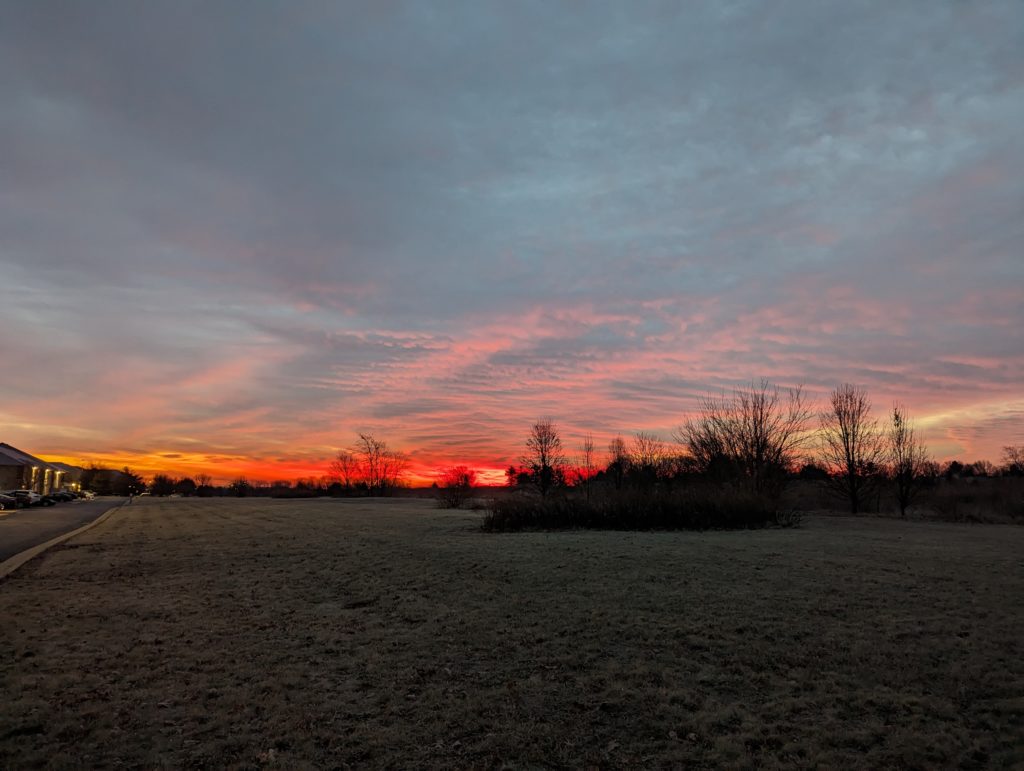
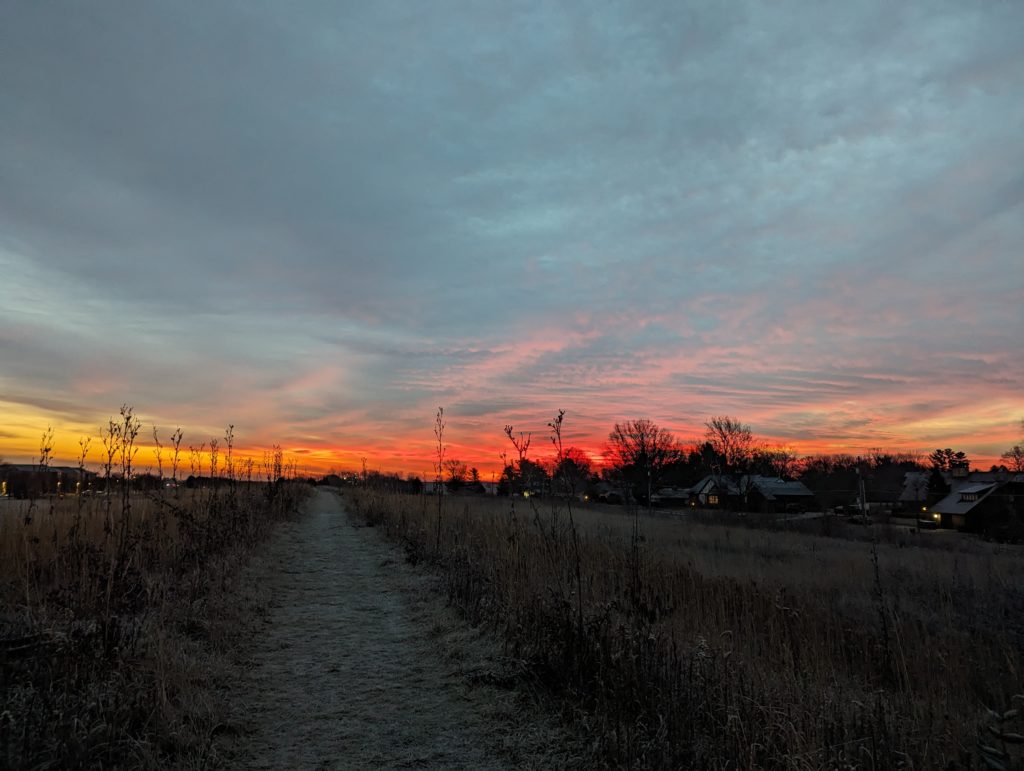

I took Ashley out just a little earlier than usual, because the dawn sky was so pretty. And good that I did, because now it’s pretty much just grey out there.


I dragged the dog to the prairie (right next to Winfield Village), so I could get this picture of the dawn sky. (She had her own opinion of where we should go for our dawn walk, but did indulge me when I insisted.)
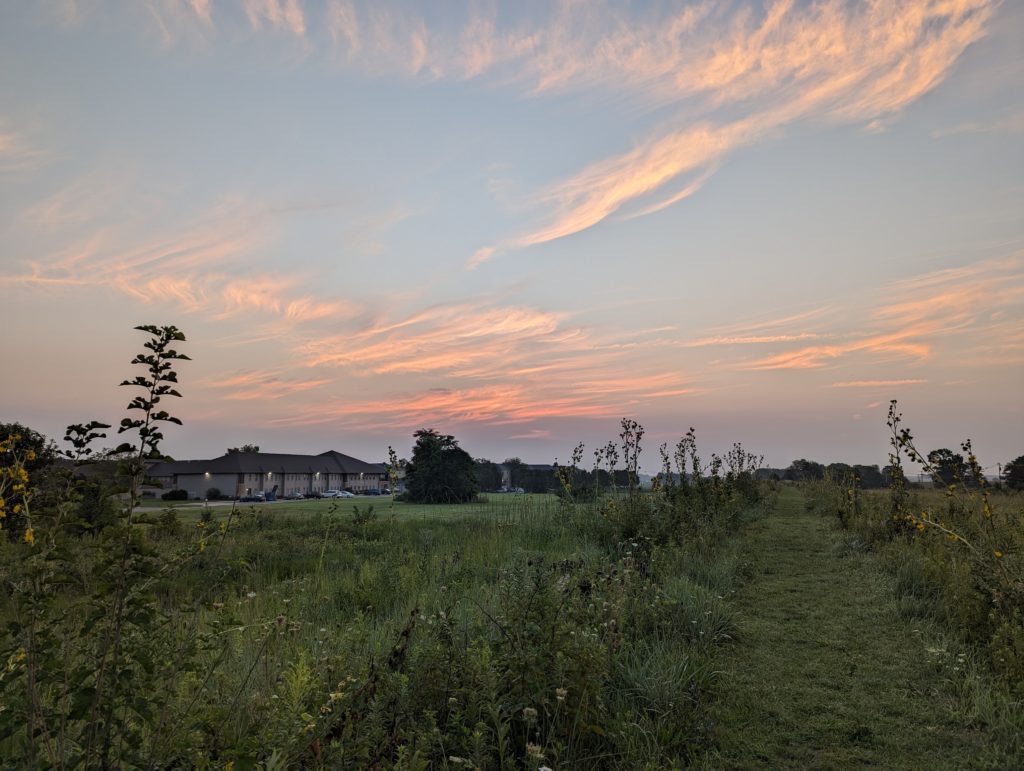
Prairie grass is growing like a weed where they did the burn a couple of weeks ago.
It’s not visible in the picture, but I saw a Yellow-shafted Flicker fly up ahead of me. They’re showy birds, always fun to see.
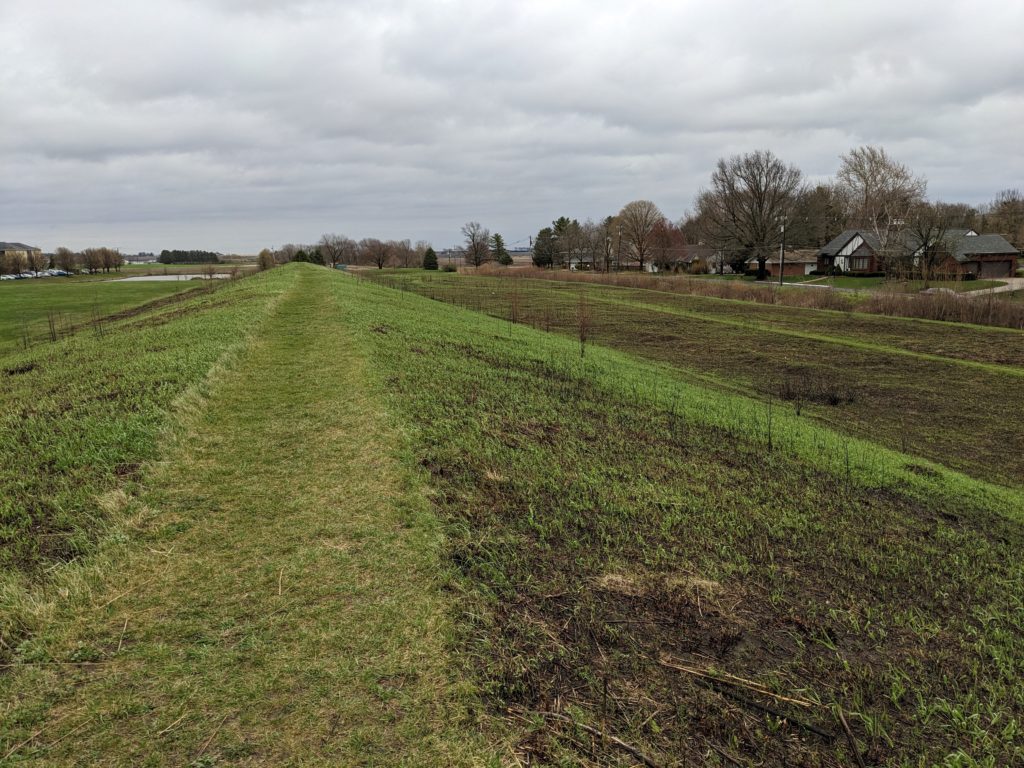
This morning Ashley was demonstrating good skills at hiding in the prairie grasses. Even though she’s black rather than brown, she was pretty well hidden when she crouched in the grass.
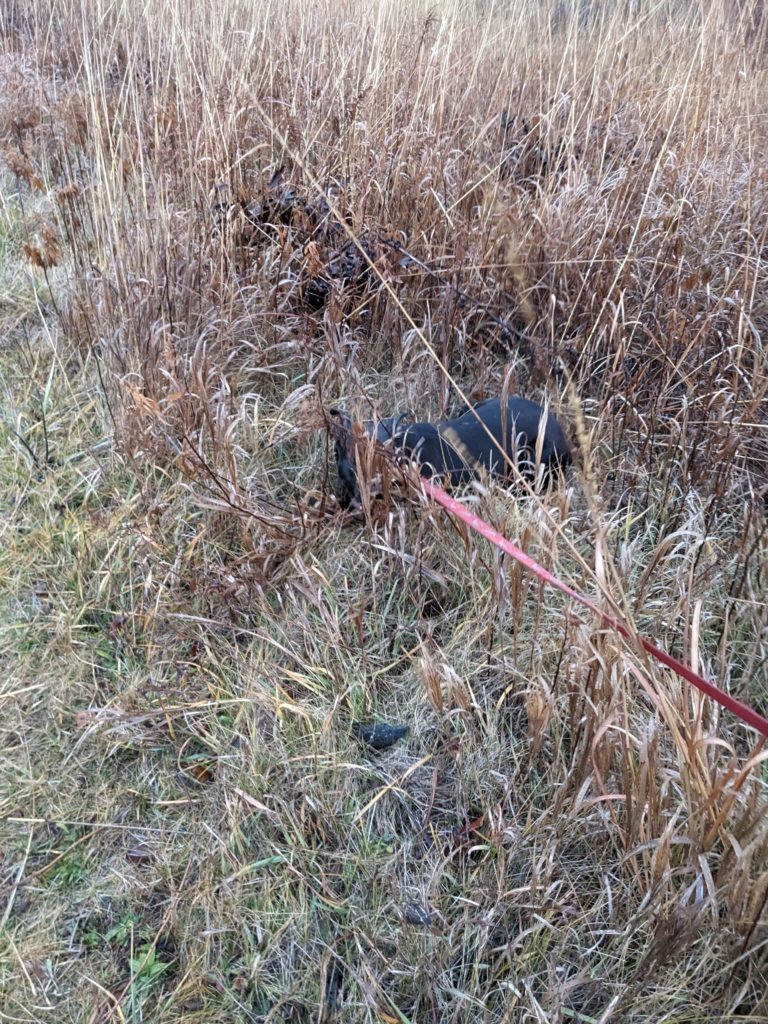
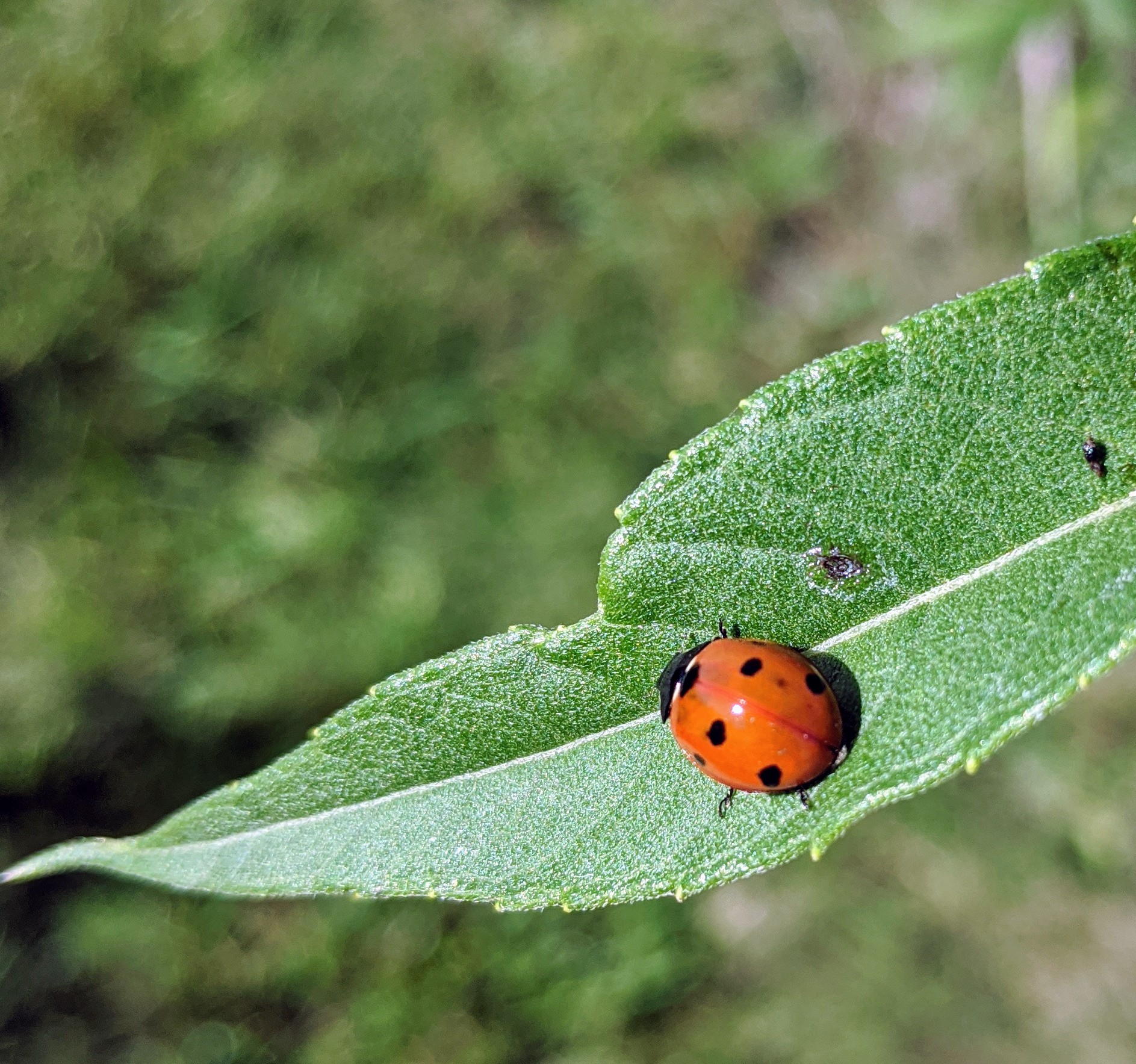
Seven-spotted ladybug (Coccinella septempunctata), observed in our local prairie.
I make an effort to get out into nature as often as possible. With our little prairie and woods nearby, it’s possible almost every day. Larger natural areas—Forest Glen, Fox Ridge, Spitler Woods, etc.—are within easy driving distance.

With my focus having been on nature for a long time, I was interested to read this piece in The Guardian:
In recent years, stressed-out urbanites have been seeking refuge in green spaces, for which the proven positive impacts on physical and mental health are often cited in arguments for more inner-city parks and accessible woodlands. The benefits of “blue space” – the sea and coastline, but also rivers, lakes, canals, waterfalls, even fountains – are less well publicised, yet the science has been consistent for at least a decade: being by water is good for body and mind.
Source: Blue spaces: why time spent near water is the secret of happiness
We do have some water right here where we live. There’s the little creek that runs behind Winfield Village and a couple of little detention ponds, and they do have some wildlife. I often see turtles, snakes, groundhogs, and many sorts of birds. I’ve occasionally seen mink, coyotes, and bald eagles.
I do feel the lack of a beach. The closest is Indiana Dunes, but it’s nearly 3 hours away. I’ve done it as a day trip, but it makes for kind of a long day.

The article makes for a good reminder to be sure to include blue when you’re making sure you get out into the green.

I am a little too prone to use black humor to distance myself from the depressing effects of the long, cold darkness of winter, which sometimes leaves people worrying about me unnecessarily. So I thought I’d mention that despite a bit of anxiety over the inevitable turn of the seasons, my mood is currently pretty great.
Beyond just feeling good right now, I’m hopeful. Over the past decade I’ve been handling winters better and better.
The biggest factor, I think, is that I no longer have a job to lose, so I no longer get into the spiral where seasonal depression makes me less productive, making me anxious about losing my job, making me more depressed, making me even less productivity. Sadly, advising others to take advantage of this strategy is not very useful (although I do and will continue to support and advocate for either a citizen wage or a guaranteed job).
Putting early retirement aside as impractical for most people, I thought I’d briefly summarize my other current practices—mostly ordinary coping strategies—both as a reference for myself any time I start to feel my brain chemicals coming on, and perhaps as a resource for other people. Here’s what’s working for me:
I have a few new possibilities up my sleeve:
That’s what I’ve got at the moment, but I’m always on the lookout for things to alleviate seasonal depression.